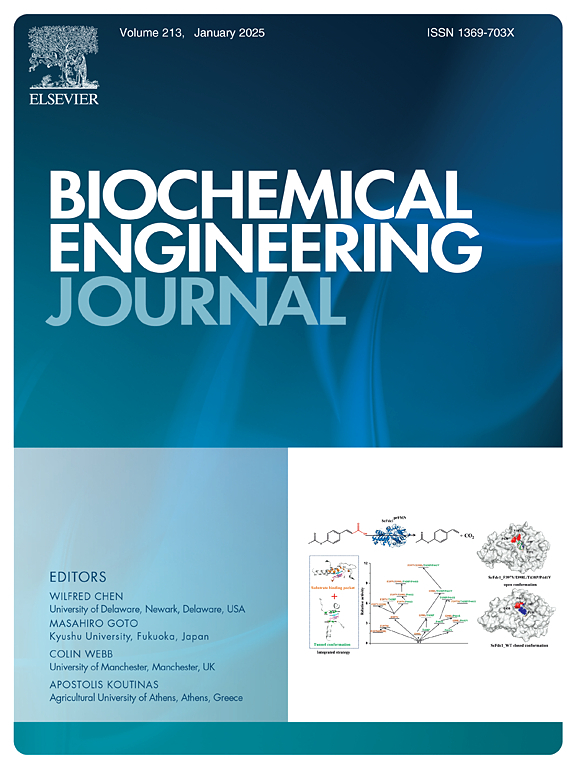三维肿瘤球体成熟度对细胞迁移和侵袭动力学的影响
IF 3.7
3区 生物学
Q2 BIOTECHNOLOGY & APPLIED MICROBIOLOGY
引用次数: 0
摘要
细胞运动是癌症转移的关键,了解肿瘤细胞中的细胞运动调控对于开发抗转移疗法至关重要。传统的二维细胞培养试验可深入了解细胞迁移,但无法复制体内组织的复杂三维结构。肿瘤球体等三维细胞培养模型已被用于细胞迁移测试。本研究探讨了球体成熟度在肿瘤细胞迁移中的作用,假设球体成熟度反映了实体瘤的生理状况。研究人员将人类前列腺癌(DU 145)、乳腺癌(MCF-7)和小鼠乳腺癌(EMT-6)细胞培养成不同时间(3、7 和 11 天)的球形。对这些球形细胞的迁移和侵袭进行了分析,结果表明,培养 11 天的 DU 145 球形细胞的水平迁移能力最强,这与 RNA-seq 数据显示的细胞粘附性、细胞骨架动力学和运动途径增加有关。共聚焦显微镜和单细胞多模分析仪显示,成熟球体内的活性氧(ROS)水平较高,可能会激活运动途径。此外,用化疗试剂多柔比星(Doxorubicin,DOX)处理 DU 145 球形体,结果显示与培养 3 天的球形体相比,培养 7 天和 11 天的球形体对 DOX 的耐受性更强。这些发现突出了在癌症研究和药物开发中考虑球体成熟度的重要性,强调了对球体生长条件进行系统分析的必要性,以确保实验设置的可重复性和可靠性。本文章由计算机程序翻译,如有差异,请以英文原文为准。
The impact of 3D tumor spheroid maturity on cell migration and invasion dynamics
Cell motility is crucial in cancer metastasis, and understanding its regulation in tumor cells is vital for developing anti-metastatic therapies. Traditional 2D cell culture assays provide insights into cell migration but fail to replicate the complex 3D architecture of tissues in vivo. 3D cell culture models like tumor spheroids have been applied for cell migration tests. This study investigates the role of spheroid maturity in tumor cell motility, hypothesizing that spheroid maturity mirrors physiological conditions in solid tumors. Human prostate (DU 145), breast (MCF-7), and murine breast (EMT-6) cancer cells were cultured into spheroids of varying time (3, 7, and 11 days). The migration and invasion of these spheroids were analyzed, revealing that 11-day-old DU 145 spheroids demonstrated the greatest horizontal migration, correlating with RNA-seq data showing increased cell adhesion, cytoskeleton dynamics, and motility pathways. Confocal microscopy and single-cell multimode analyzer indicated higher reactive oxygen species (ROS) levels in mature spheroids, potentially activating motility pathways. Additionally, DU 145 spheroids were treated with chemotherapy reagent Doxorubicin (DOX), and the results showed that spheroids culture for 7 and 11 days exhibited greater resistance to DOX compared to spheroids cultured for 3 days. These findings highlighted the importance of considering spheroid maturity in cancer research and drug development, emphasizing the need for systematic analysis of spheroid growth conditions to ensure reproducible and reliable experimental settings.
求助全文
通过发布文献求助,成功后即可免费获取论文全文。
去求助
来源期刊

Biochemical Engineering Journal
工程技术-工程:化工
CiteScore
7.10
自引率
5.10%
发文量
380
审稿时长
34 days
期刊介绍:
The Biochemical Engineering Journal aims to promote progress in the crucial chemical engineering aspects of the development of biological processes associated with everything from raw materials preparation to product recovery relevant to industries as diverse as medical/healthcare, industrial biotechnology, and environmental biotechnology.
The Journal welcomes full length original research papers, short communications, and review papers* in the following research fields:
Biocatalysis (enzyme or microbial) and biotransformations, including immobilized biocatalyst preparation and kinetics
Biosensors and Biodevices including biofabrication and novel fuel cell development
Bioseparations including scale-up and protein refolding/renaturation
Environmental Bioengineering including bioconversion, bioremediation, and microbial fuel cells
Bioreactor Systems including characterization, optimization and scale-up
Bioresources and Biorefinery Engineering including biomass conversion, biofuels, bioenergy, and optimization
Industrial Biotechnology including specialty chemicals, platform chemicals and neutraceuticals
Biomaterials and Tissue Engineering including bioartificial organs, cell encapsulation, and controlled release
Cell Culture Engineering (plant, animal or insect cells) including viral vectors, monoclonal antibodies, recombinant proteins, vaccines, and secondary metabolites
Cell Therapies and Stem Cells including pluripotent, mesenchymal and hematopoietic stem cells; immunotherapies; tissue-specific differentiation; and cryopreservation
Metabolic Engineering, Systems and Synthetic Biology including OMICS, bioinformatics, in silico biology, and metabolic flux analysis
Protein Engineering including enzyme engineering and directed evolution.
 求助内容:
求助内容: 应助结果提醒方式:
应助结果提醒方式:


